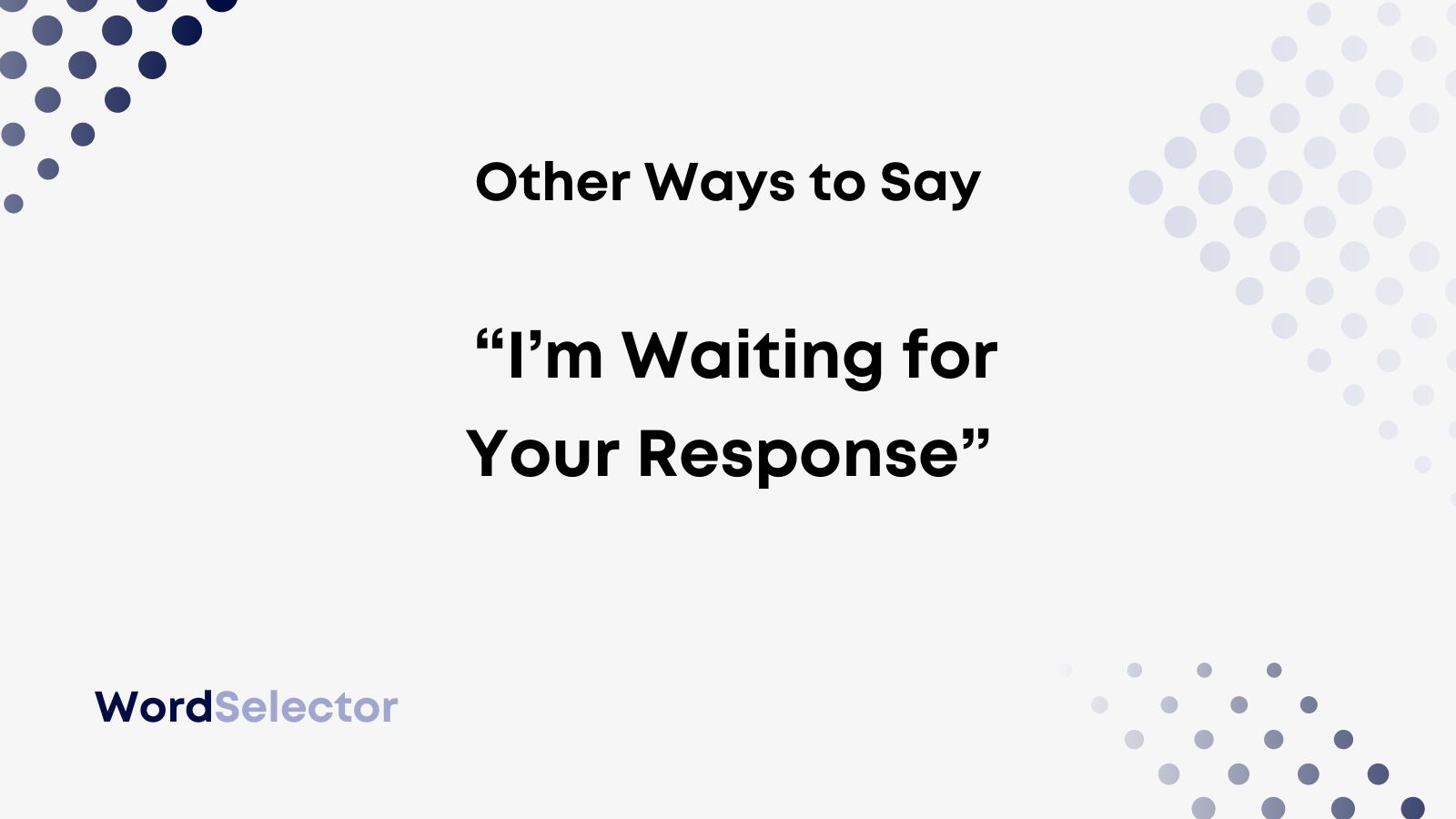Do you want to know a polite way to remind someone to reply? “I’m waiting for your response” works, but it might not quite cut it.
Luckily, you have options. This article will explore how to politely ask someone to reply to an email. We’ve included plenty of synonyms to help you if you’re stumped.
Other Ways to Say “I’m Waiting for Your Response”
- I look forward to hearing from you
- Let me know what you think
- I’m keen to hear what you have to say
- I’m eagerly awaiting your reply
- When you’re ready, please reply
- Please reply when you know what to say
- I’m keen to learn from you
- I can’t wait to read your response
- Let me know when you’ve got an answer
- What do you think of this?
KEY TAKEAWAYS
- “I’m waiting for your response” is a decent phrase, though it sounds a bit forced and impolite.
- Try “I look forward to hearing from you” to sound professional and email someone who hasn’t responded.
- “Let me know what you think” is a great informal alternative that works well in many email formats.
Keep reading to learn more about the best synonyms. We’ve highlighted the best ones and shown you how they work with email samples.
Also, you can skip to the final section to learn about “I’m waiting for your response.” Then, you’ll know whether it’s correct and acceptable to include it in your formal emails.
I Look Forward to Hearing From You (Formal)
“I look forward to hearing from you” shows how to politely tell someone that you’re waiting for their response. It’s an excellent formal synonym because it shows you are patient and keen to learn what they have to say.
Generally, “I look forward to hearing from you” is a good email closer. You can use it to end an email when talking to employees. That way, you can show you’re eager to learn what they’ve done and ask for a response without sounding too direct.
It’s a very subtle phrase. It doesn’t ask for a response directly, so it works well when you want to be respectful. We certainly recommend using it over “I’m waiting for your response.” It’s much more professional and polite, so it works better in formal emails.
Here is an email example to show you how it works:
Dear Ryan,
It’s been a while since I’ve heard from you. I’m still trying to figure out the next steps for this project.
I look forward to hearing from you,
David
Let Me Know What You Think (Informal)
“Let me know what you think” is a decent informal synonym. It shows you want to ask someone’s opinion without pushing them to respond too quickly. Generally, it allows someone to respond in their own time.
You should use this phrase in emails to colleagues. If you’re close to your colleague, it’s a good way of asking for their opinion without sounding bossy or demanding. It’s a very respectful and friendly phrase to include in an email.
Incidentally, “let me know what you think” also works formally. You can use it as an email closer instead of “I’m waiting for your response” when you want to sound polite and professional.
This example will help you with it:
Hey Sarah,
Let me know what you think about the changes. You haven’t told me anything yet, so I hope we agree!
All the best,
George
Is It Correct to Say “I’m Waiting for Your Response”?
“I’m waiting for your response” is correct. However, it often sounds forced and impolite. It’s quite a rude phrase that makes you sound desperate for a response.
If you want to sound formal and polite, “I’m waiting for your response” is certainly not the best choice. Most people will be offended if you send a follow-up email with this statement rather than choosing a more respectful alternative.
You can also switch things around by using these variations:
- I’m waiting for your reply
- I’m waiting for your response as soon as possible
- This is just a friendly reminder that I’m waiting for your response
“Reply” and “response” are synonymous in the phrase. However, neither option is suitable if you want to sound as polite as possible. We still recommend finding an alternative.
Don’t forget to bookmark this page to remind yourself of the best synonyms. There will always come a time when you can benefit from switching out “I’m waiting for your response” in your formal emails, after all.

